Abstract
This paper examines Italy's worker-based model for occupational health, especially its key concepts and its relation to social conflict. It briefly reviews the history of three approaches to occupational health in Italy: university-based, industry-based, and government-based. It then analyzes the worker-based approach, which emerged in the late 1960s and early 1970s as worker groups and trade unions mobilized around new concepts of occupational health. Five key concepts are discussed: the workers' homogeneous group; workers' subjectivity; the use of contract language; the development of local occupational health institutions; and the use of occupational hazard risk maps. The analysis illustrates how the social processes of mobilization and institutionalization affected the ideas and structures of Italian occupational health. Worker mobilization in Italy produced ideological changes in the nation's occupational health system, institutional changes in universities and governments, and legislative changes at national and local levels. The institutionalization of reforms, however, created new conflicts and problems and tended to restrict worker participation and promote expert intervention. The paper concludes with a brief outline of the history of occupational health approaches in the United States and then discusses the implications of the five Italian concepts for US occupational health policy.
Full text
PDF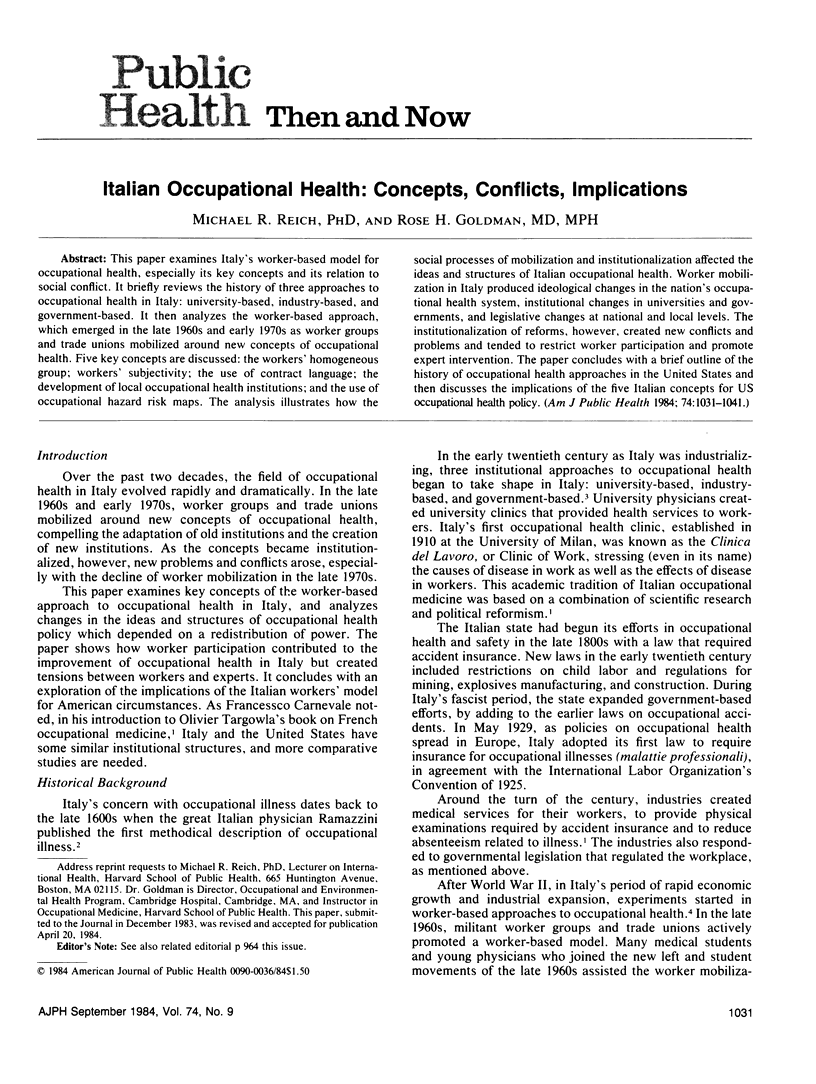
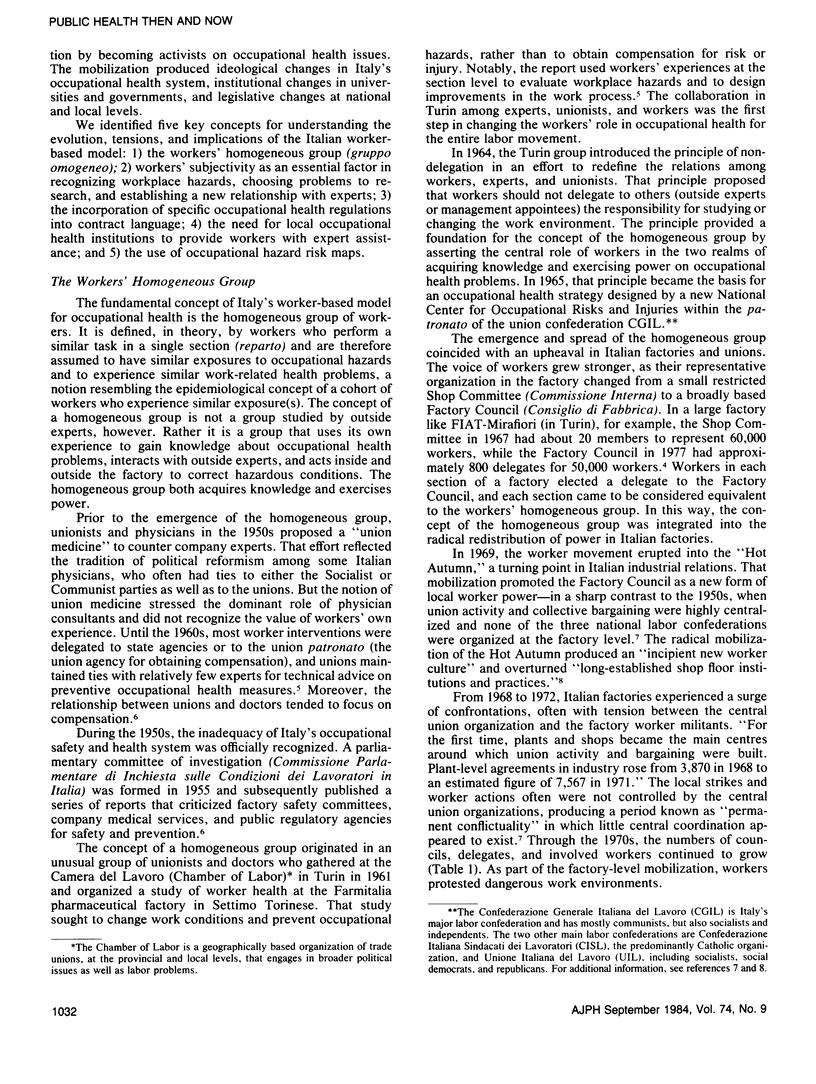
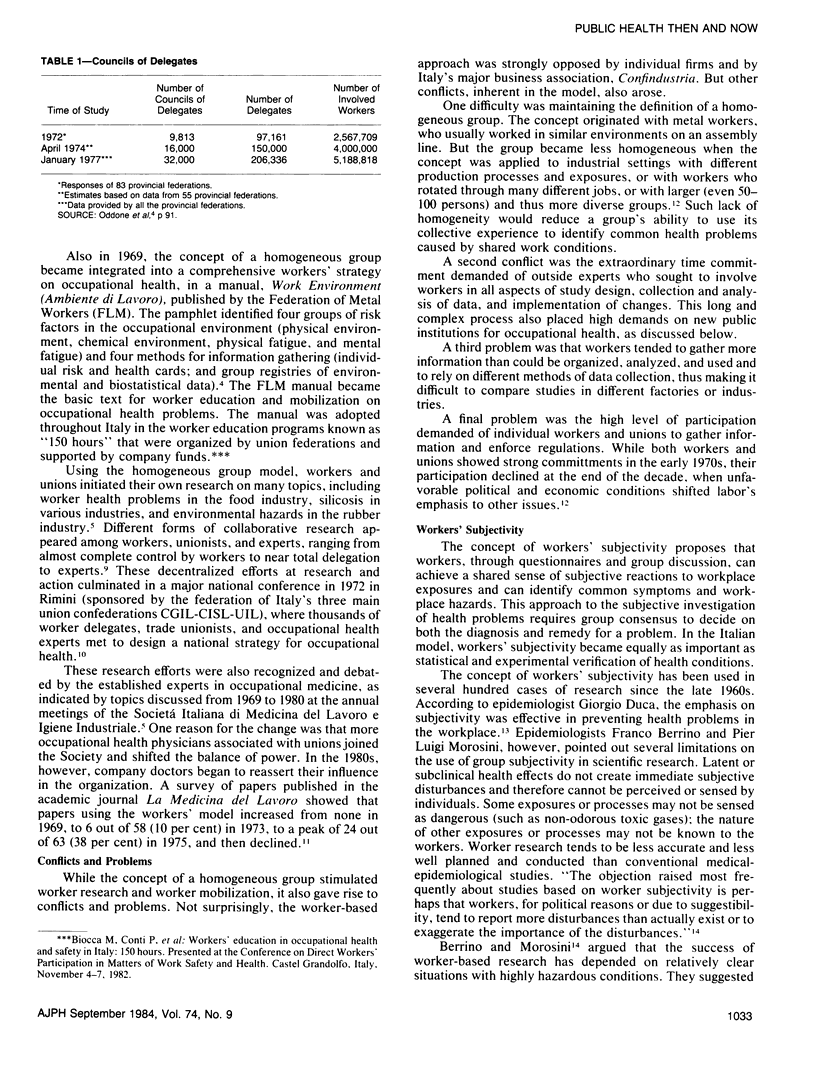
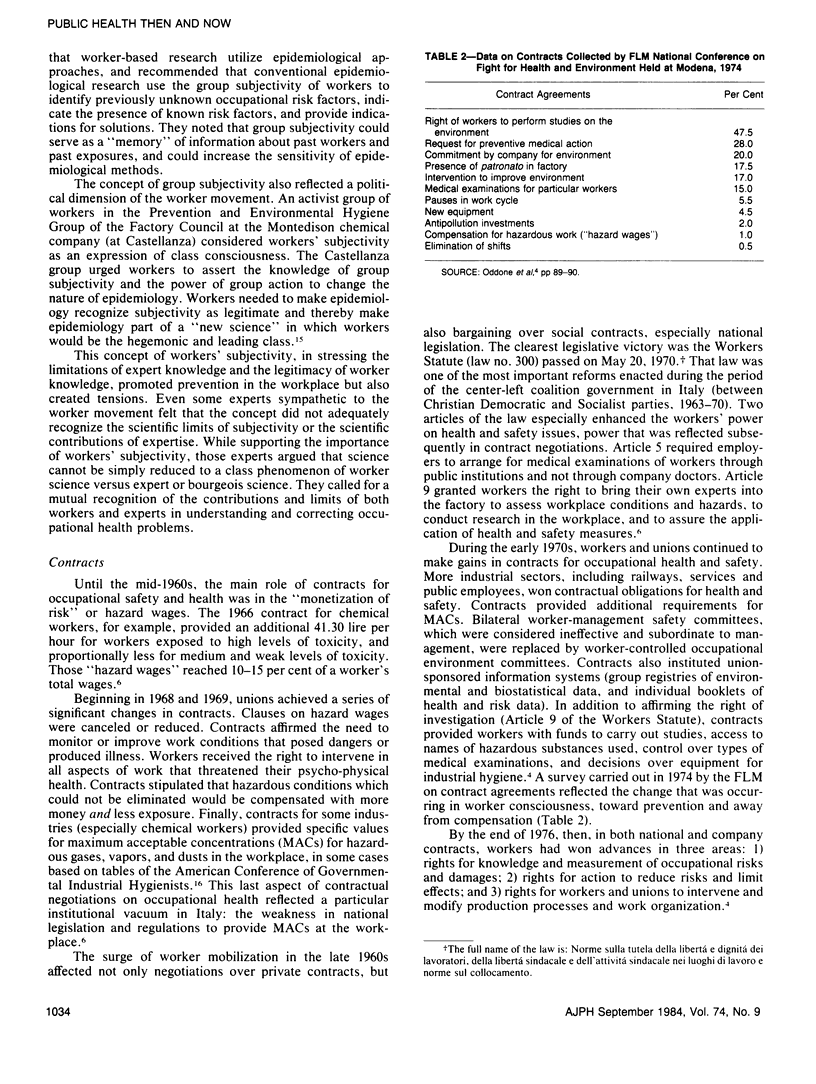
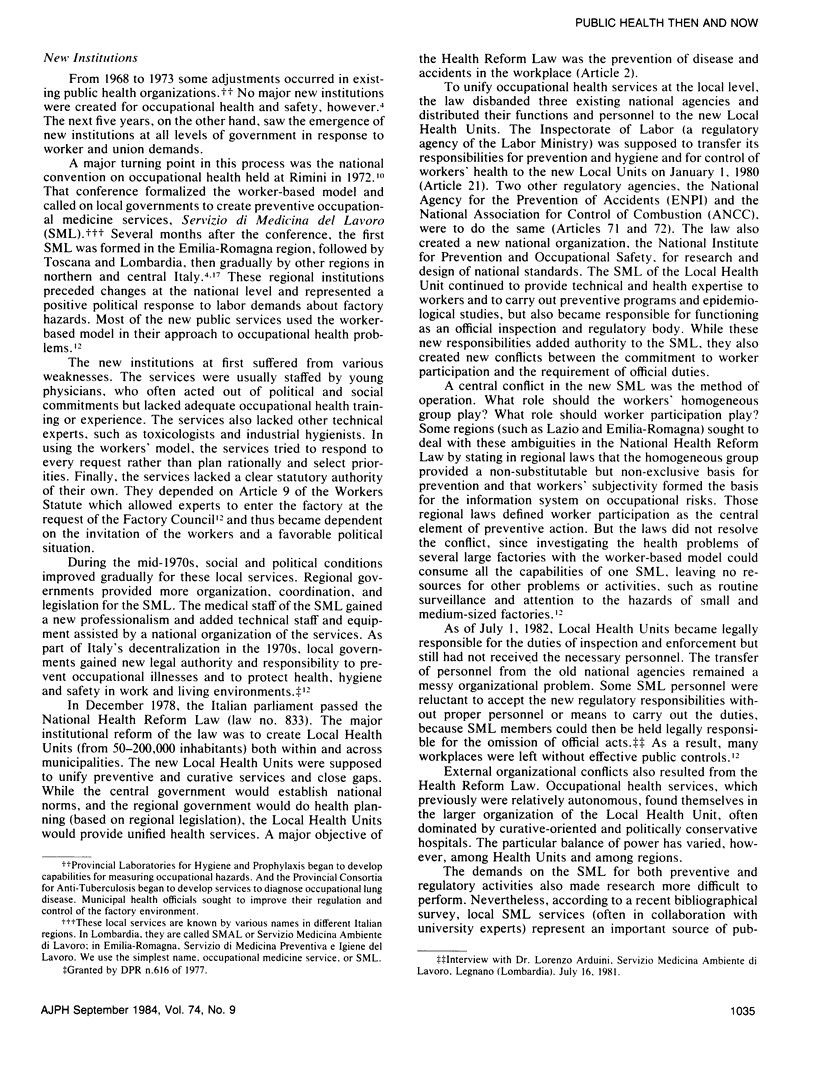
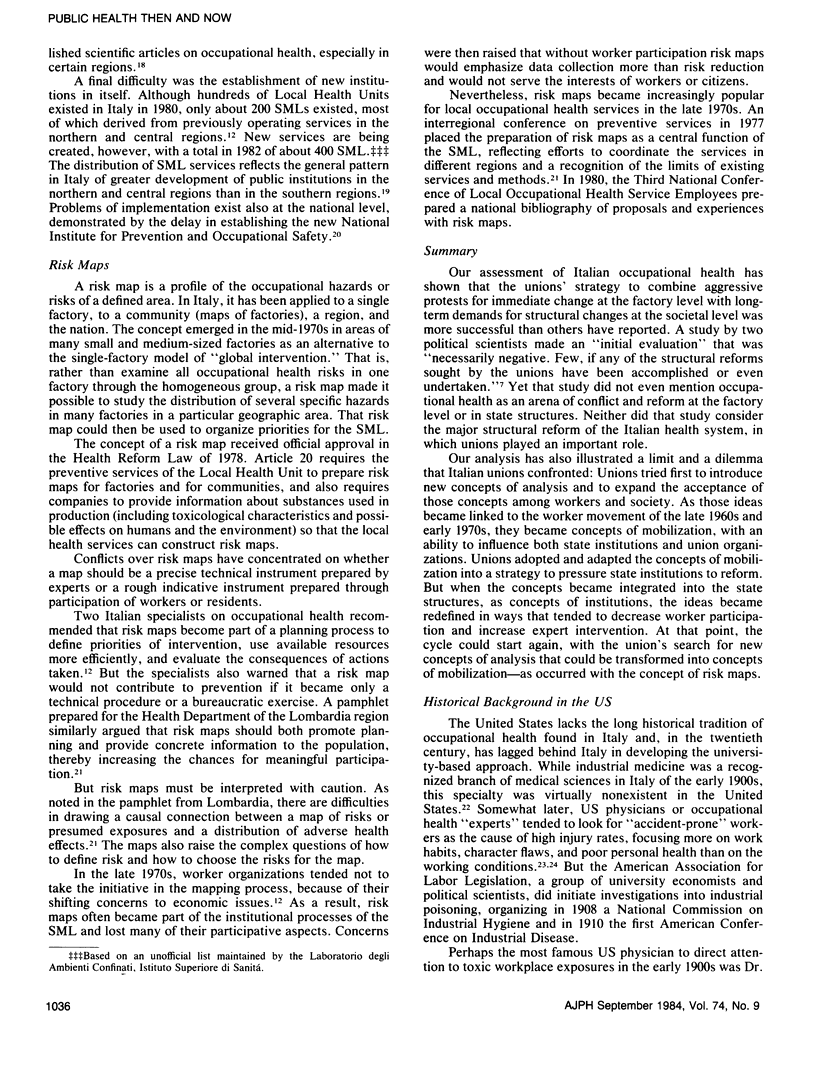
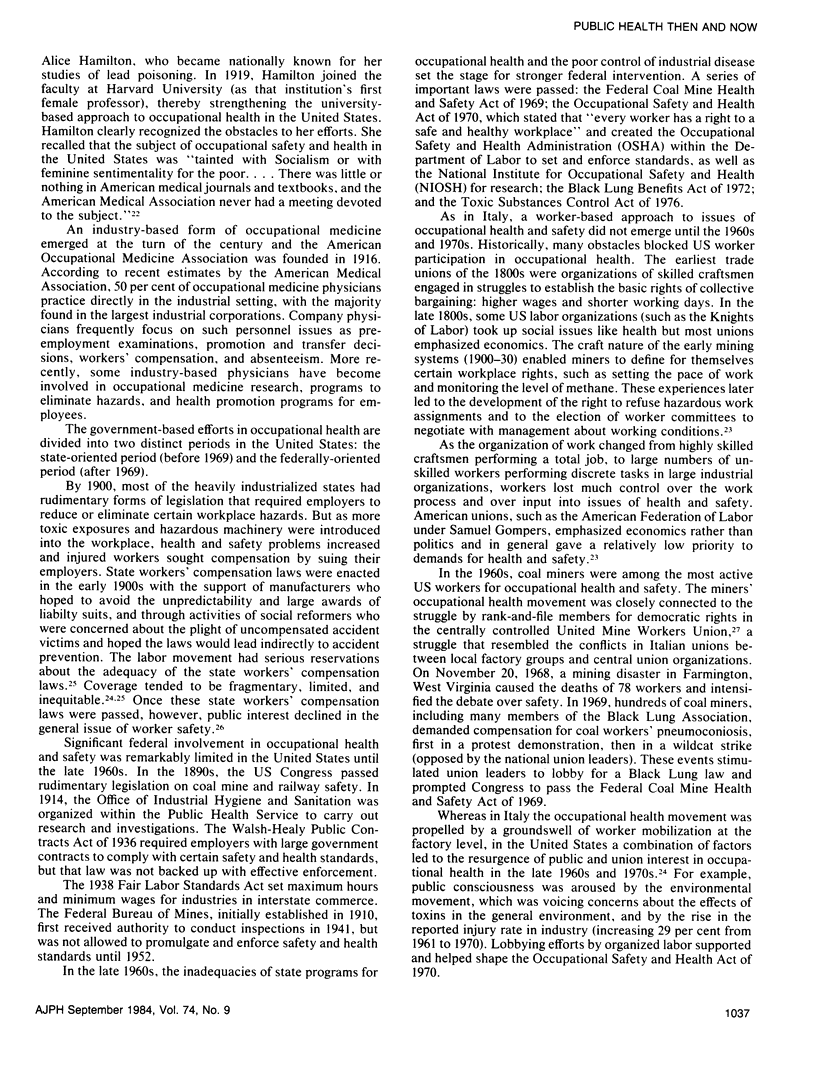
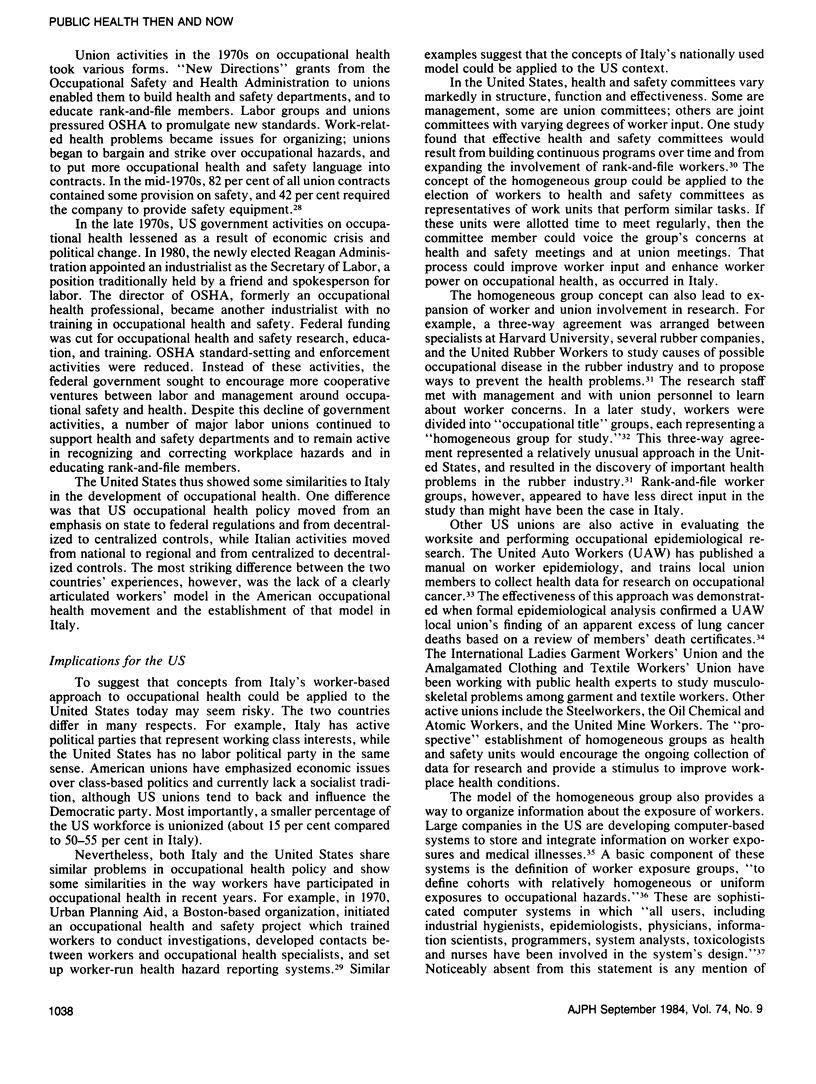
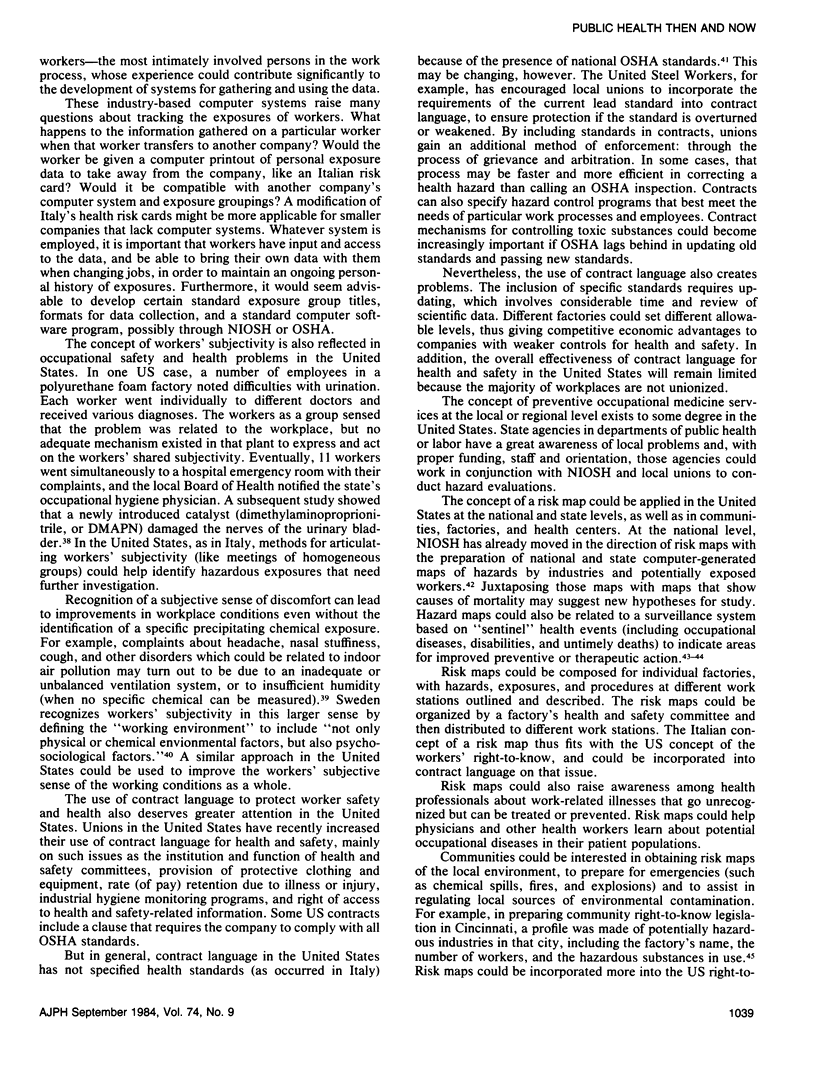

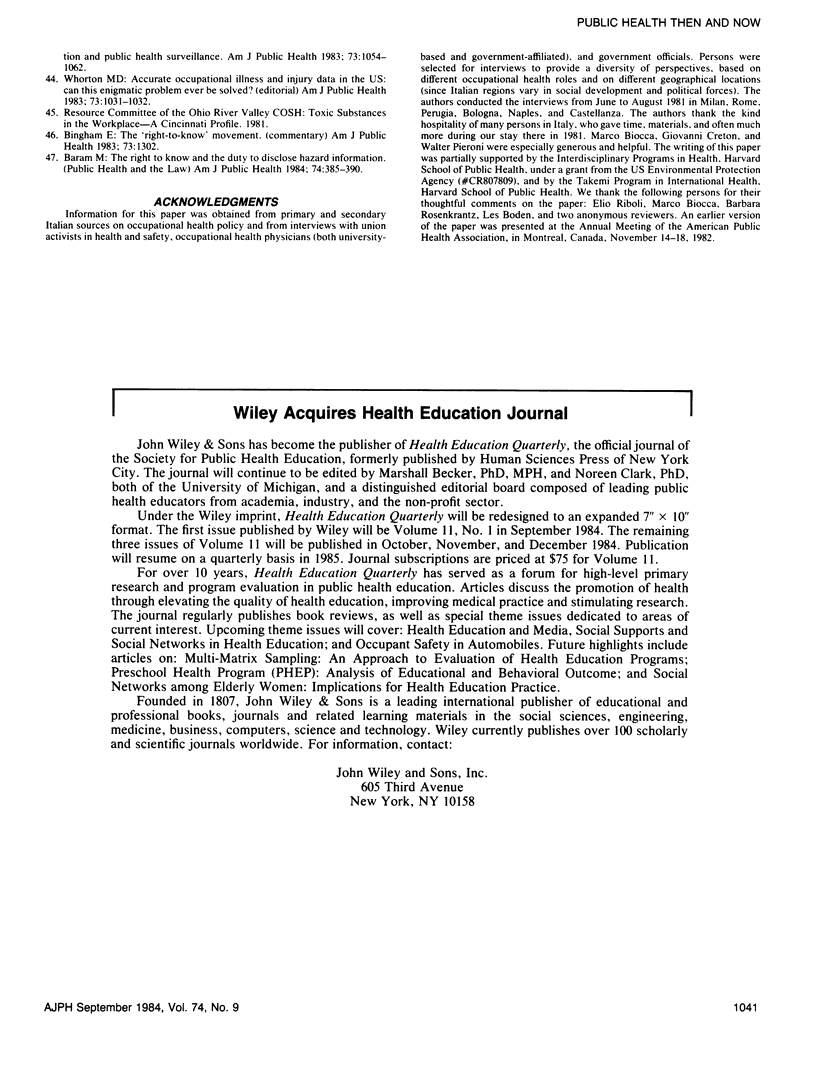
Selected References
These references are in PubMed. This may not be the complete list of references from this article.
- Assennato G., Navarro V. Workers' participation and control in Italy: the case of occupational medicine. Int J Health Serv. 1980;10(2):217–232. doi: 10.2190/QE4G-6984-J1RJ-EJVG. [DOI] [PubMed] [Google Scholar]
- Bagnara S., Biocca M., Mazzonis D. G. Trends in occupational health and safety policy in Italy. Int J Health Serv. 1981;11(3):431–450. [PubMed] [Google Scholar]
- Baram M. S. The right to know and the duty to disclose hazard information. Am J Public Health. 1984 Apr;74(4):385–390. doi: 10.2105/ajph.74.4.385. [DOI] [PMC free article] [PubMed] [Google Scholar]
- Bingham E. The 'Right-to-Know' movement. Am J Public Health. 1983 Nov;73(11):1302–1302. doi: 10.2105/ajph.73.11.1302. [DOI] [PMC free article] [PubMed] [Google Scholar]
- Frazier T. M., Lalich N. R., Pedersen D. H. Uses of computer-generated maps in occupational hazard and mortality surveillance. Scand J Work Environ Health. 1983 Apr;9(2 Spec No):148–154. doi: 10.5271/sjweh.2431. [DOI] [PubMed] [Google Scholar]
- Kreiss K., Wegman D. H., Niles C. A., Siroky M. B., Krane R. J., Feldman R. G. Neurological dysfunction of the bladder in workers exposed to dimethylaminopropionitrile. JAMA. 1980 Feb 22;243(8):741–745. [PubMed] [Google Scholar]
- Peters J. M., Monson R. R., Burgess W. A., Fine L. J. Occupational disease in the rubber industry. Environ Health Perspect. 1976 Oct;17:31–34. doi: 10.1289/ehp.761731. [DOI] [PMC free article] [PubMed] [Google Scholar]
- Silverstein M., Mirer F., Kotelchuck D., Silverstein B., Bennett M. Mortality among workers in a die-casting and electroplating plant. Scand J Work Environ Health. 1981;7 (Suppl 4):156–165. [PubMed] [Google Scholar]
- Wegman D. H., Boden L., Levenstein C. Health hazard surveillance by industrial workers. Am J Public Health. 1975 Jan;65(1):26–30. doi: 10.2105/ajph.65.1.26. [DOI] [PMC free article] [PubMed] [Google Scholar]
- Whorton M. D. Accurate occupational illness and injury data in the US: can this enigmatic problem ever be solved? Am J Public Health. 1983 Sep;73(9):1031–1032. doi: 10.2105/ajph.73.9.1031. [DOI] [PMC free article] [PubMed] [Google Scholar]
- Wolf P. H., Andjelkovich D., Smith A., Tyroler H. A case-control study of leukemia in the U.S. rubber industry. J Occup Med. 1981 Feb;23(2):103–108. doi: 10.1097/00043764-198102000-00013. [DOI] [PubMed] [Google Scholar]


